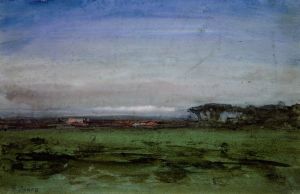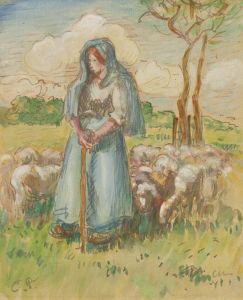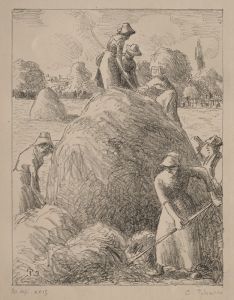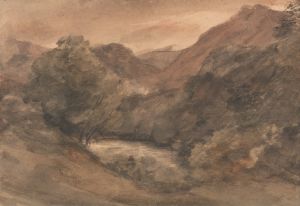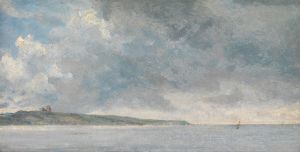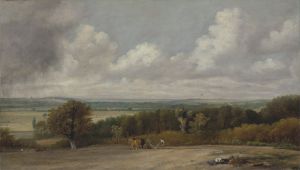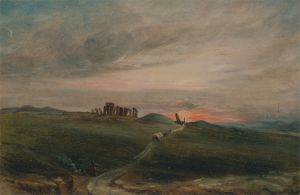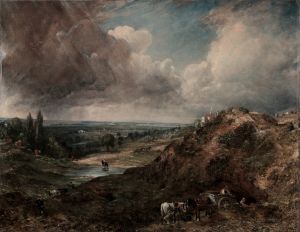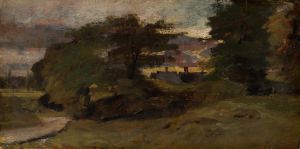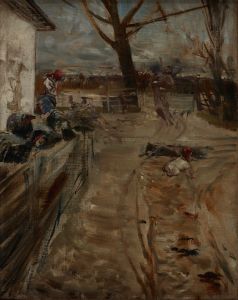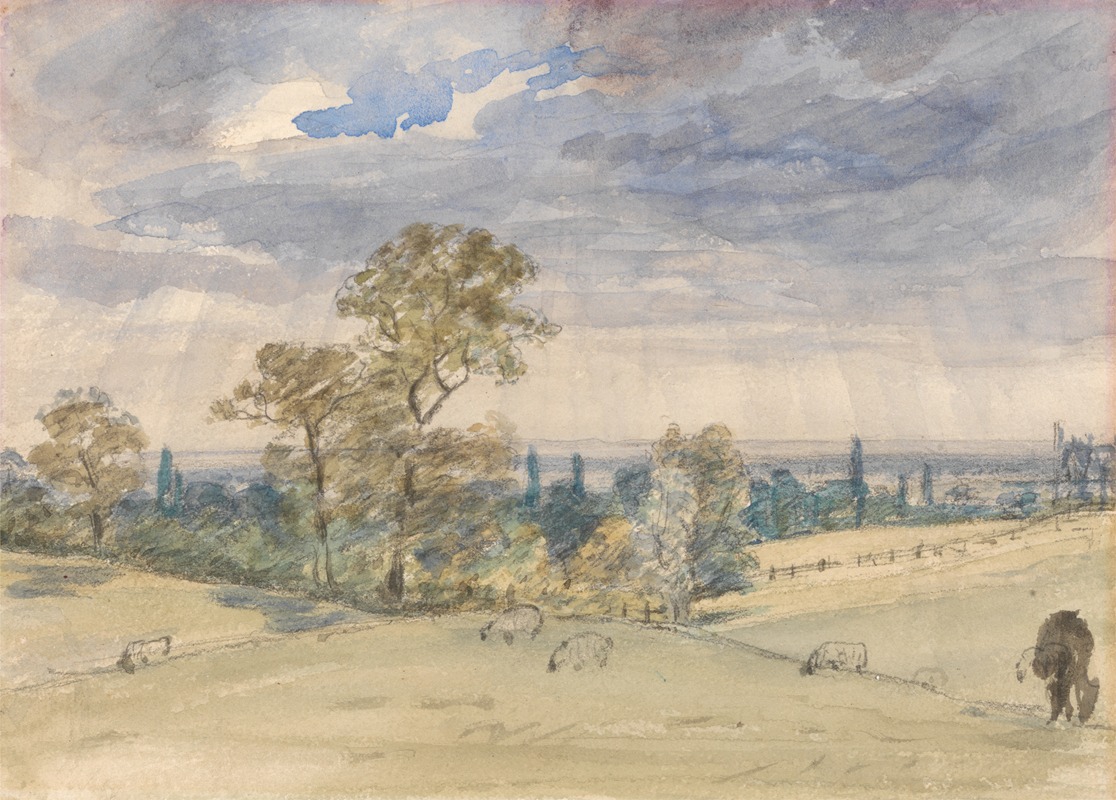
Suffolk Landscape
A hand-painted replica of John Constable’s masterpiece Suffolk Landscape, meticulously crafted by professional artists to capture the true essence of the original. Each piece is created with museum-quality canvas and rare mineral pigments, carefully painted by experienced artists with delicate brushstrokes and rich, layered colors to perfectly recreate the texture of the original artwork. Unlike machine-printed reproductions, this hand-painted version brings the painting to life, infused with the artist’s emotions and skill in every stroke. Whether for personal collection or home decoration, it instantly elevates the artistic atmosphere of any space.
John Constable's Suffolk Landscape is a painting attributed to the renowned English Romantic painter John Constable (1776–1837). Constable is celebrated for his depictions of the English countryside, particularly scenes from his native Suffolk, which played a central role in his artistic career. His works are known for their naturalistic approach, attention to atmospheric effects, and emotional resonance, which marked a departure from the more formalized landscapes of earlier periods.
The painting Suffolk Landscape reflects Constable's deep connection to the rural scenery of Suffolk, where he was born and raised. This region, particularly the area around the River Stour, inspired many of his most famous works. Constable often referred to this area as his "painting room" and drew extensively from its pastoral beauty. While specific details about the creation date or exact location depicted in Suffolk Landscape are not widely documented, the work is consistent with Constable's broader artistic focus on capturing the essence of the English countryside.
Constable's landscapes were revolutionary for their time, as he sought to portray nature with authenticity and emotion. He often painted en plein air (outdoors) to study the effects of light and weather, later refining these studies into finished works in his studio. His use of loose brushwork and attention to atmospheric conditions, such as the play of clouds and light, are evident in many of his paintings, including Suffolk Landscape. These techniques influenced the development of landscape painting and inspired later movements, such as Impressionism.
The painting is believed to showcase Constable's characteristic style, with a focus on natural elements like trees, fields, and waterways. His works often included rural structures, such as cottages or mills, and figures engaged in everyday activities, though it is unclear if such details are present in Suffolk Landscape. Constable's ability to evoke a sense of place and time through his landscapes has made his works enduringly popular.
As with many of Constable's paintings, Suffolk Landscape reflects his belief in the spiritual and emotional power of nature. He once wrote, "Painting is but another word for feeling," emphasizing his view that art should convey the artist's personal connection to the subject.
While Suffolk Landscape may not be as widely recognized as some of Constable's masterpieces, such as The Hay Wain or Dedham Vale, it remains an example of his dedication to portraying the beauty and tranquility of rural England. The painting is part of the broader legacy of Constable's work, which continues to be celebrated for its contribution to the Romantic movement and its influence on the history of landscape art.
Further details about the painting, such as its current location or provenance, are not readily available in public records.






